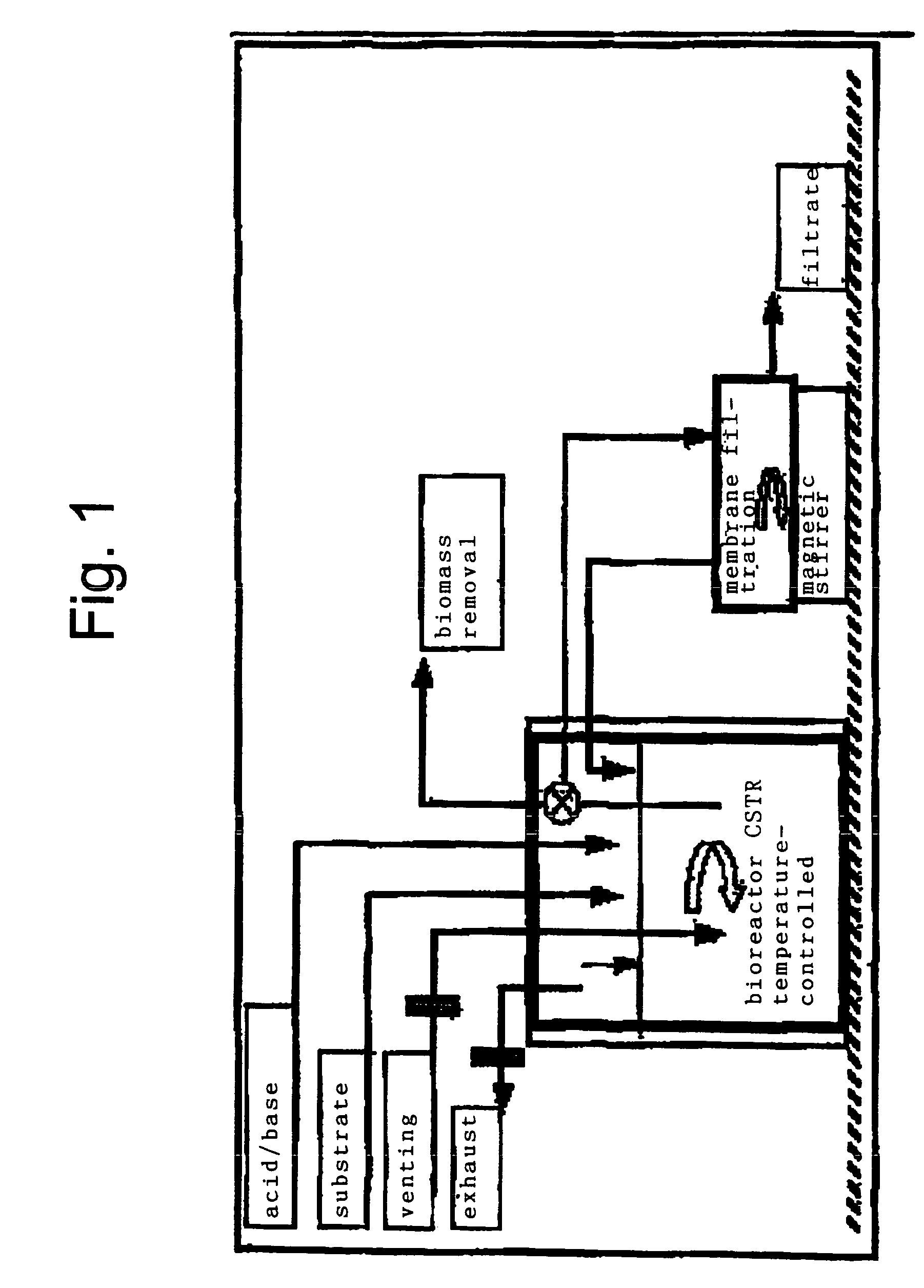Microbiological culture for triggering microbiological processes in water
a microorganism and water technology, applied in biochemistry apparatus and processes, water/sludge/sewage treatment, water treatment compounds, etc., can solve the problems of insufficient self-cleaning power, inability to fix microorganisms in specially loaded water regions of bodies of water, and problems that occur already for minimal amounts of soluble nitrogen compounds, etc., to improve the cleaning efficiency of aquatic systems
- Summary
- Abstract
- Description
- Claims
- Application Information
AI Technical Summary
Benefits of technology
Problems solved by technology
Method used
Image
Examples
Embodiment Construction
[0019]The microorganisms are preferably immobilized in a matrix wherein capsules, gels and / or gel spheres as a matrix form have been found to be particularly suitable. This type of immobilization has the advantage that moisture or water contained in the system to be cleaned can penetrate, by way of the net structure present within the capsule material or the gel material or by way of diffusion, into the immobilisate and can thus come into contact with the microorganisms. Via the capsule wall or the gel, preferably permeable for water and / or microorganisms, the microorganisms are simultaneously also dispensed into the surroundings so that outside of the capsules a contact between the harmful substances and the microorganisms can take place with decomposition of these substances.
[0020]The preferably employed capsules or spheres have preferably a diameter of approximately 100 to approximately 10,000 μm, in particular, of 100 to 5,000 μm, wherein the microorganisms, in a solid or a liqu...
PUM
| Property | Measurement | Unit |
|---|---|---|
| particle diameter | aaaaa | aaaaa |
| particle diameter | aaaaa | aaaaa |
| concentrations | aaaaa | aaaaa |
Abstract
Description
Claims
Application Information
 Login to View More
Login to View More - R&D
- Intellectual Property
- Life Sciences
- Materials
- Tech Scout
- Unparalleled Data Quality
- Higher Quality Content
- 60% Fewer Hallucinations
Browse by: Latest US Patents, China's latest patents, Technical Efficacy Thesaurus, Application Domain, Technology Topic, Popular Technical Reports.
© 2025 PatSnap. All rights reserved.Legal|Privacy policy|Modern Slavery Act Transparency Statement|Sitemap|About US| Contact US: help@patsnap.com

